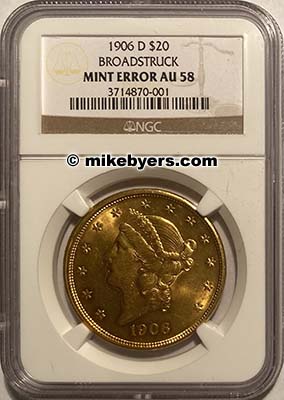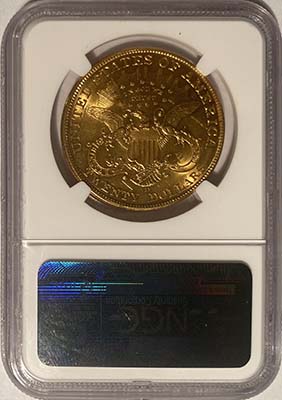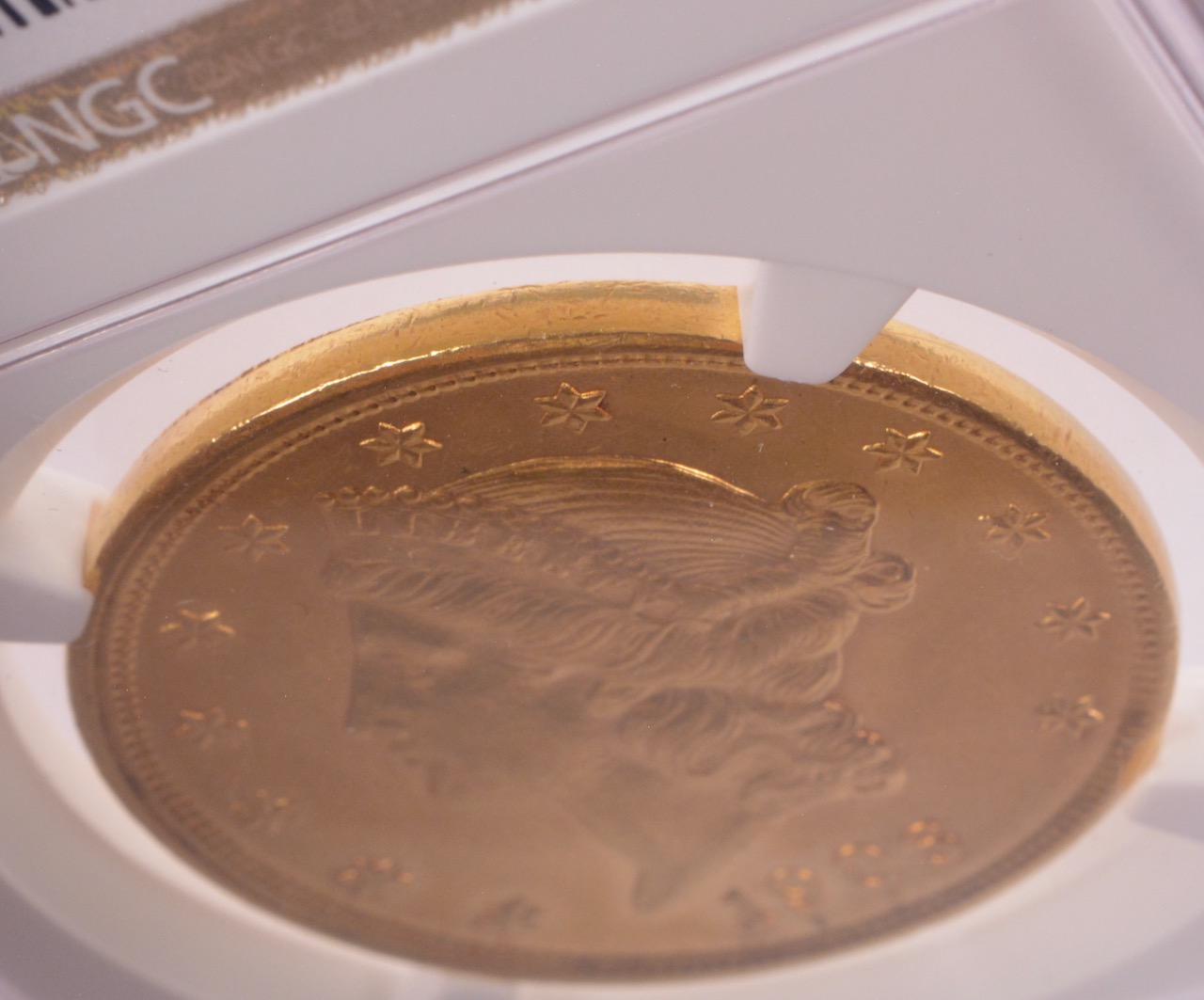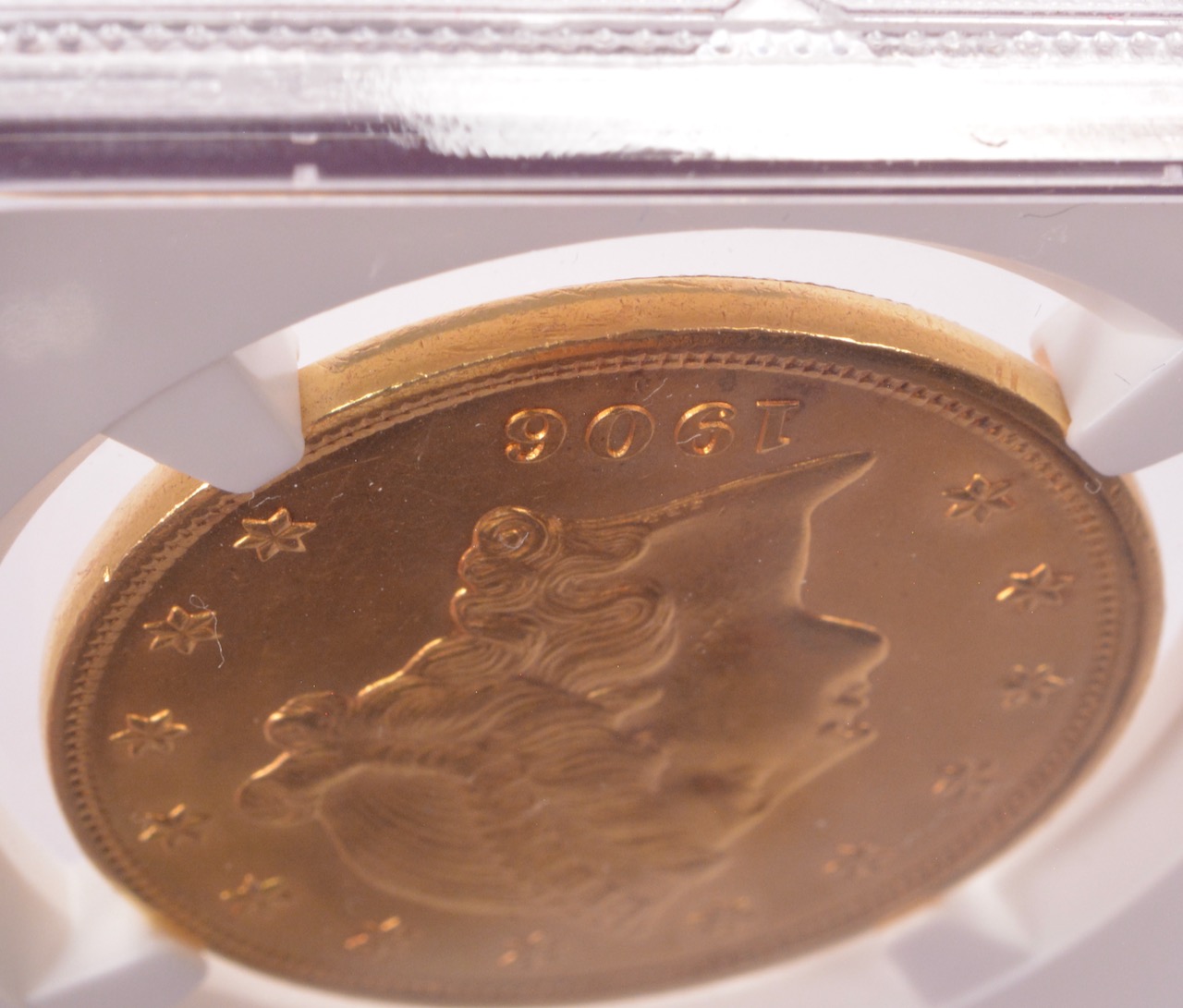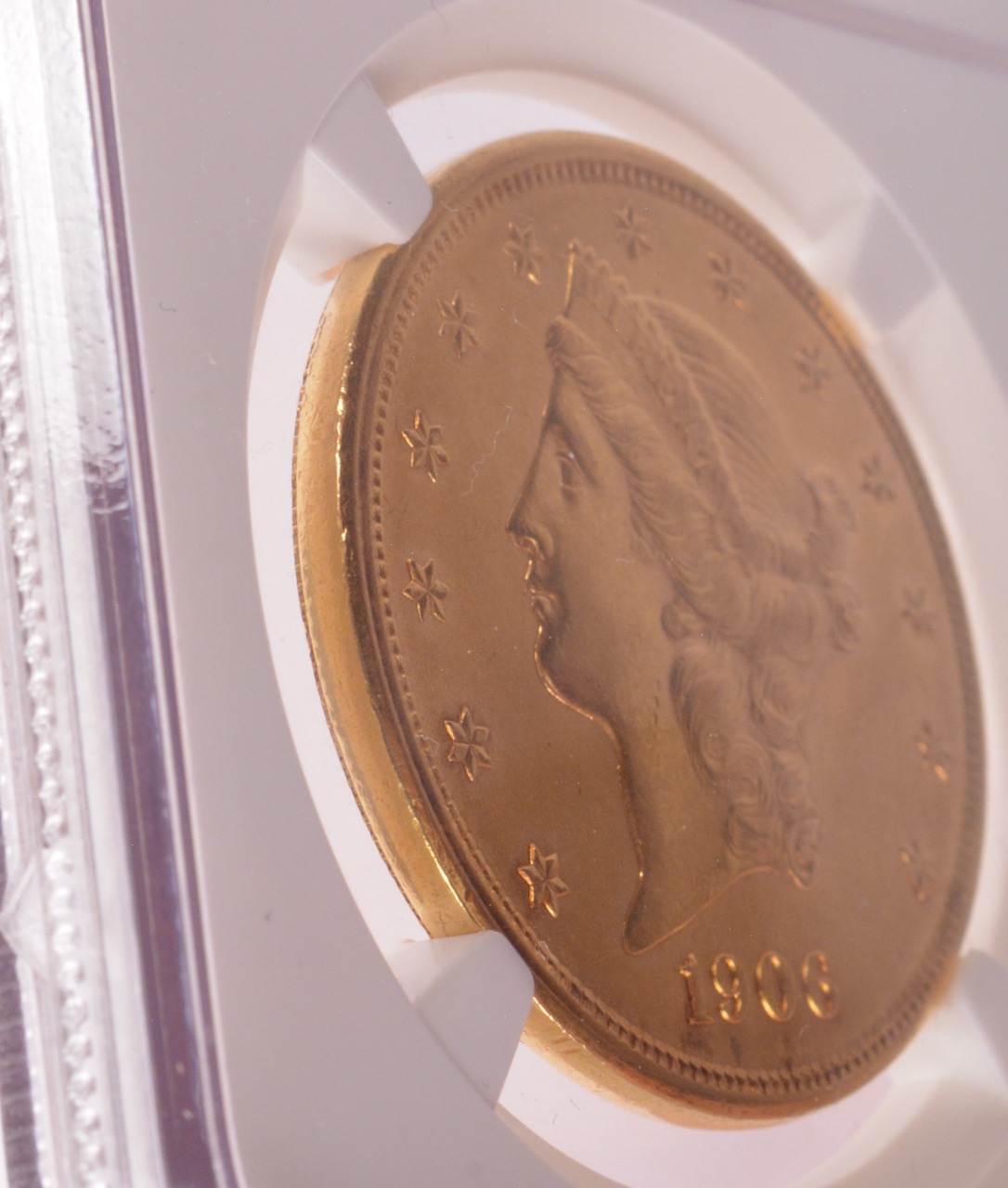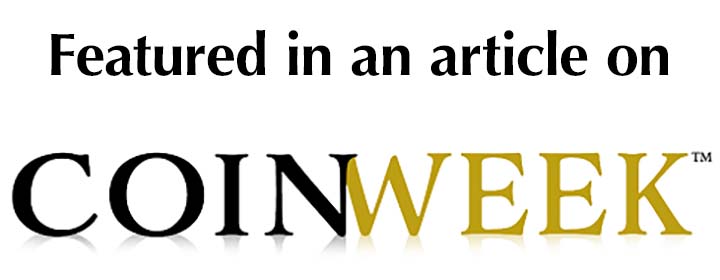1906-D $20 Liberty
Broadstruck (Out of the Collar)
PCGS AU 58
BYERS-FROHMAN
1 of Only 2 Known
$50,000
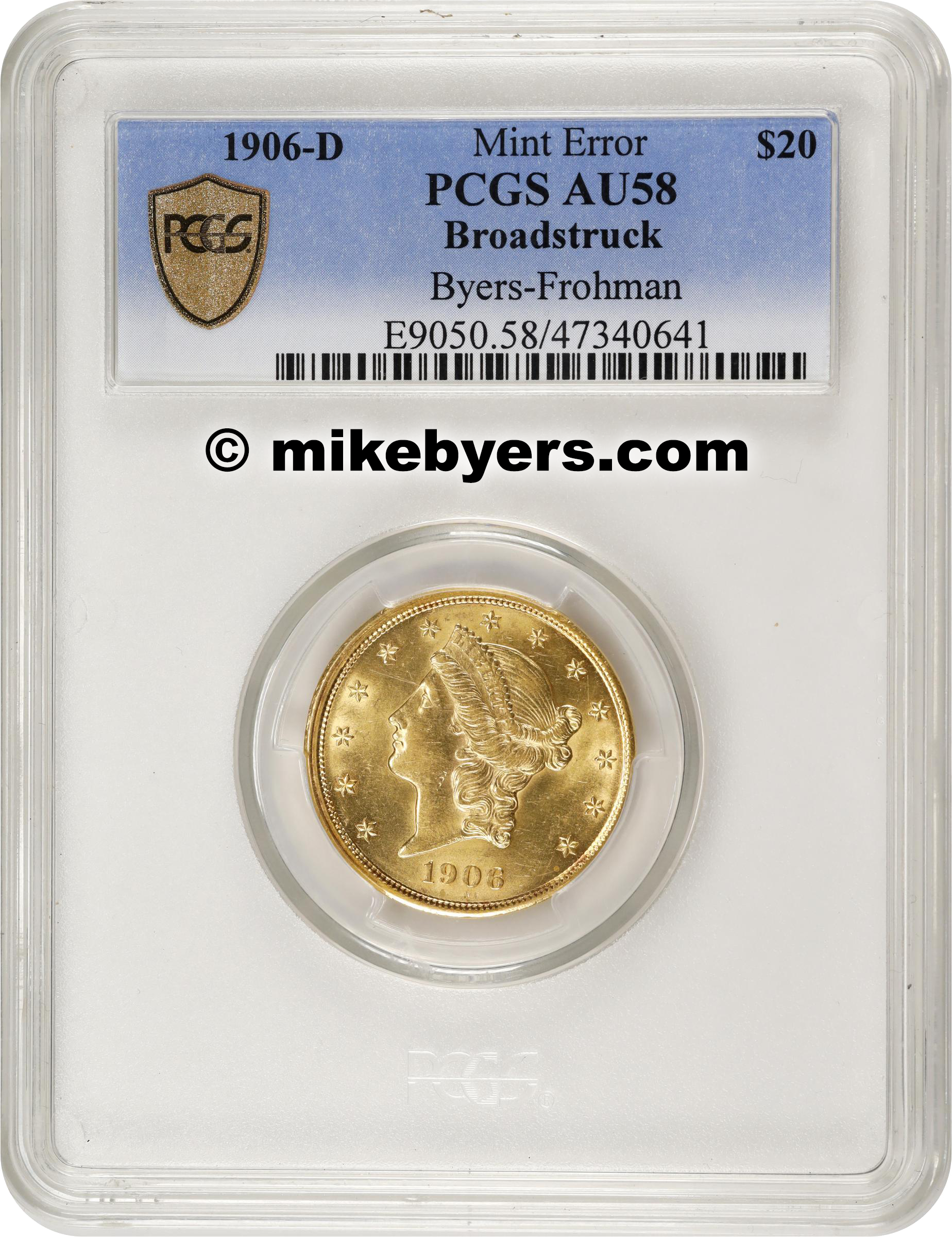

This is one of only two known United States $20 Gold Pieces that was broadstruck out of the collar. It expanded in size and has a plain edge. The other known broadstruck recently sold in a Heritage auction for $60,000.
$20 Liberty gold pieces were only struck at the Denver Mint in 1906 and 1907. It is possible that there was an issue properly setting up the dies and collar to correctly strike these gold coins since it was the first year of striking. This a phenomenal and extremely rare United States gold mint error.
In 1905, the Denver Mint was testing the new presses and equipment and would only strike gold coins in 1906 and 1907. The press was setup to strike uniface bronze medals which were the diameter of $20 Liberty gold pieces. The design read DENVER 1905 on the obverse. These medals were struck as part of a ceremony celebrating the opening of the U.S. Mint in Denver.
Major Mint Errors on United State Gold Coins are extremely rare. Gold coins were examined and highly scrutinized before being put into U.S. Mint bags for circulation. It is exciting that this unique broadstruck $20 Liberty was accidentally struck and unintentionally released from Denver Mint.
Another world-class $20 Liberty major mint error is the unique 180 degree rotated double struck, which is available for $150,000. I previously sold a unique $20 Liberty struck 15% off-center that is currently valued at over $100,000.
One of Only Two Broadstruck Errors Known for the Entire $20 Gold Series 1906-D Liberty Head Double Eagle. Broadstruck. AU-58 (PCGS). Any error coin struck in gold is an excessively rare numismatic delicacy. The United States Mint's quality control has always been tight for the higher denomination pieces; most gold coin errors are minor strikethroughs or struck slightly off center, and most commonly occur on quarter eagles. Errors on large size gold coins are virtually nonexistent. For many years, this was the only known broadstruck Liberty Head double eagle of any issue, first appearing in Heritage's May 2003 Central States auction and graded AU-58 by NGC. Between that first sale and its current offering, it has been featured among the rarities enumerated in the 2009 reference book World's Greatest Mint Errors (page 17). A broadstruck coin is one that is struck without the collar. The collar is the part of the press that holds the planchet in place as the dies come down, while simultaneously applying the edge reeding. Coins struck without a collar expand and get distorted as there is nothing to keep the planchet from expanding dramatically under the enormous pressure delivered by the coining press. At the same time, coins that are broadstruck also lack any edge device, or in the case of this Liberty Head double eagle, a reeded edge. Thus, it can be said that this piece is one of only two "plain edge" double eagles known from a total mintage that exceeded 170 million coins from 1850 through the end of the Saint-Gaudens' series in 1933. The coin itself is a beautifully lustrous and sharply struck example with the initial appearance of a piece that approaches the Select Mint State level. Only under intense scrutiny do we see a trace of the slightest friction. The broadstruck distortion can be seen along the left obverse border, which is dramatically higher and wider than typically seen; the diameter is also a touch wider than a normal in-collar striking. There are no blemishes of note apart from a tiny, shallow reeding mark at the junction of Liberty's cheek and neck, and the visual appeal is very strong. When Mike Byers wrote about this coin, it was encapsulated in an early generation NGC holder, and the plain edge (the most important feature of this broadstruck piece) was obscured. To the benefit of today's error specialists, the coin is currently encapsulated in a larger PCGS "Rarities" holder which gives ample room with the edge view gasket to see the edge and its lack of reeding. As noted above, for many years the offered coin was the only known broadstruck Liberty Head double eagle. A second example, dated 1904 and graded MS-64 by NGC, was recently sold by Heritage in August 2024 and realized $60,000. Provenance: From Heritage's CSNS Signature Sale of May 2003, lot 7893; unknown intermediaries; Mike Byers; David Frohman. |
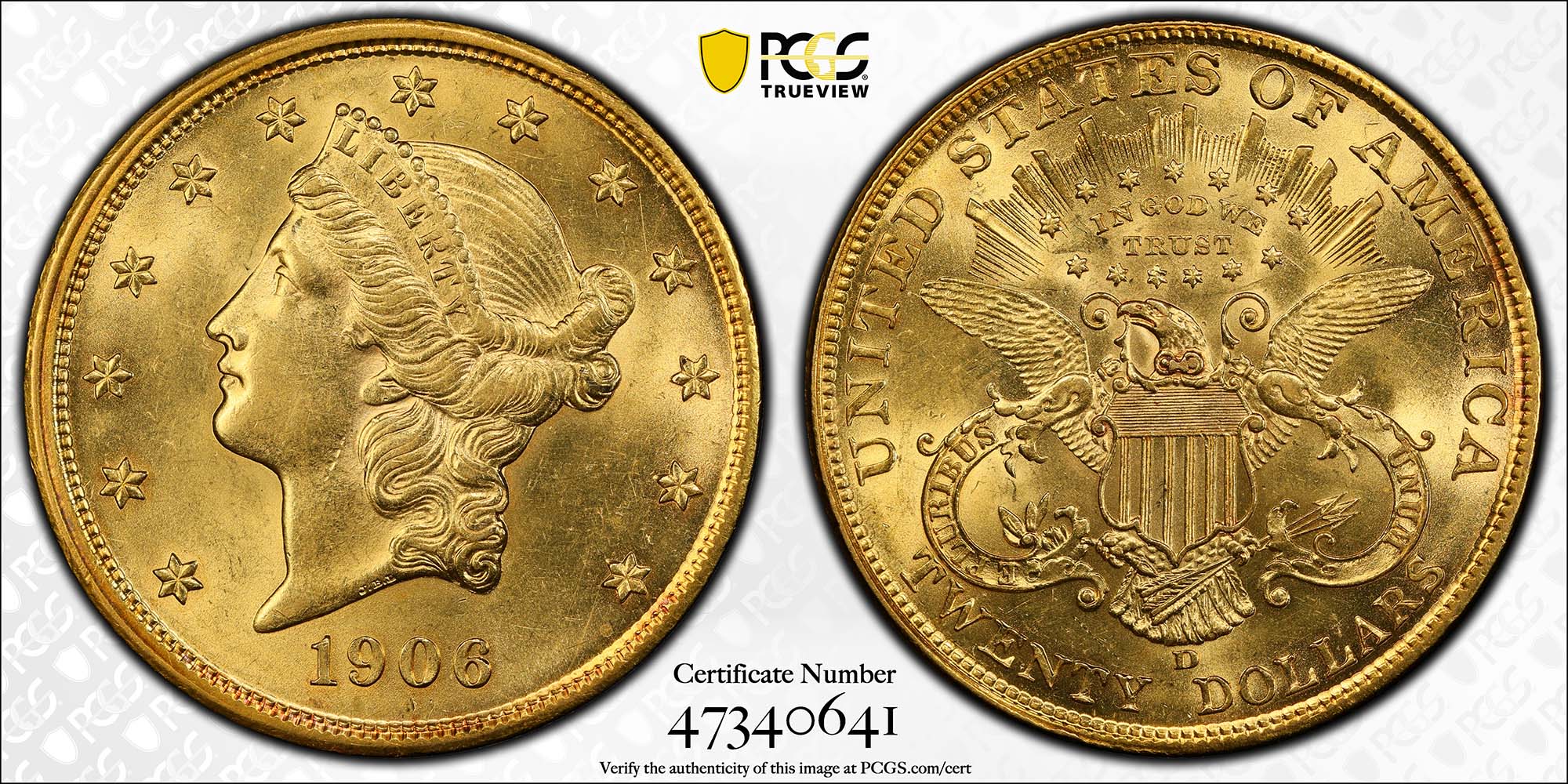

This Gold Broadstruck $20 is plated in Chapter 2 of my
NLG award winning book, World's Greatest Mint Errors:
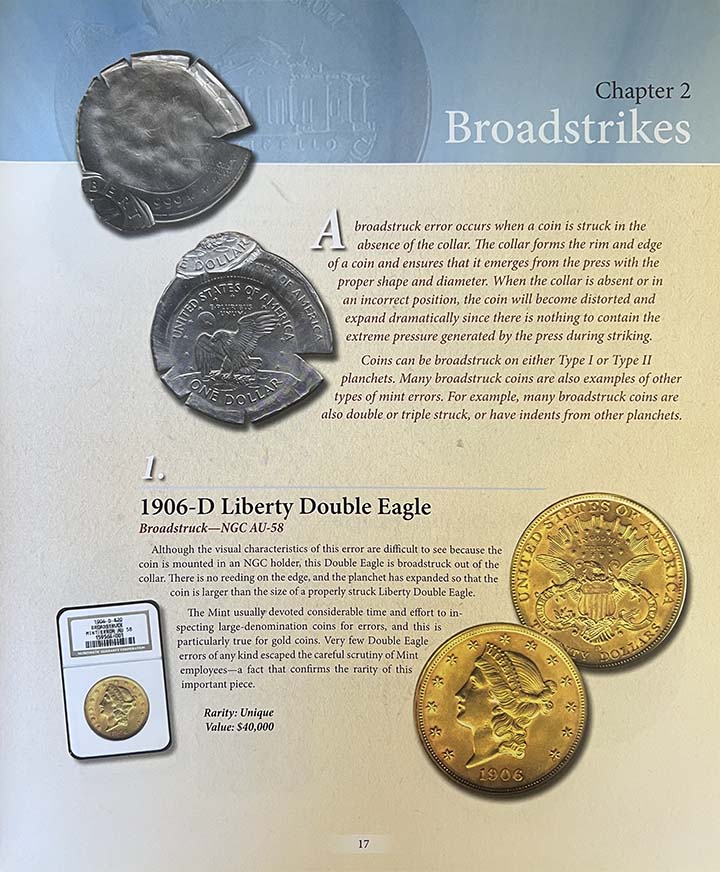

This was originally in a NGC AU 58 holder
and then re-holdered by NGC to show the edge:
